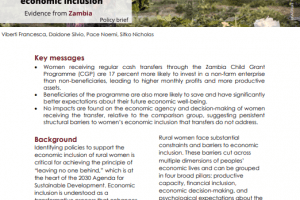The social reality of gender discrimination in India is stratified, multi-phasic and structurally complex. Studies suggest that there are obvious differences in the condi-tions of households headed by male and female and that female-headed households are more disadvantaged poses the question of gender discrimination at household level. The study explores how gender roles and norms, impact family head’s ability to exercise resources and agency differently, by gender and how women’s agency is often restricted compared to men’s. An innovative method to measure gender sta-tus called Gender Status Index is adopted from the quantitative part of the Afri-can Gender and Development Index that compares the status of female heads to the male heads in India. The index measures the gender gap in social, economic and political aspects of life among the family heads with help of data obtained from the Indian Human Development Survey round two (2011–2012), which is a nationally representative, multi-topic survey. The nearer the score is towards 1, the better is the gender status along with a shrinking gender gap. Results indicate that the sta-tus of female heads is indeed poor, showcasing a value of 0.555 with awide social and economic and even wider political gap. The paper concludes that the status of women ispoor irrespective of their head position in the family. The role played by a female head both as a provider and caregiver does not earn much of a higher status than male heads. Thus, the role of ‘head’ for a female is not a powerful agency to improve women’s access and control of resources.
Status of women: a comparative study of female and male household heads in India





Add Comment